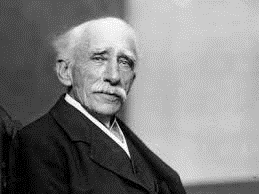📻 The Radio Harmonium
One of the earliest electronic instruments of the Soviet period, the Radio (or ‘Cathodic’) Harmonium was a three voice polyphonic cathode vacuum tube instrument controlled by a manual keyboard, designed for playing atonal music by the audio physicist Sergeĭ Nikolaevich Rzhevkin (1891-1981). The instrument was used by the philosopher Ivan Orlov in his investigations of aural phenomena.
Vacuum tube
A vacuum tube, electron tube, valve (British usage), or tube (North America), is a device that controls electric current flow in a high vacuum between electrodes to which an electric potential difference has been applied.
The type known as a thermionic tube or thermionic valve utilizes thermionic emission of electrons from a hot cathode for fundamental electronic functions such as signal amplification and current rectification. Non- thermionic types such as a vacuum phototube, however, achieve electron emission through the photoelectric effect, and are used for such purposes as the detection of light intensities. In both types, the electrons are accelerated from the cathode to the anode by the electric field in the tube.
Audio power amplifier using tubes, in operation. Red-orange glow is from heated filaments.
Illustration representing a primitive triode vacuum tube and the polarities of the typical dc operating potentials. Not shown are the impedances (resistors or inductors) that would be included in series with the C and B voltage sources.
The simplest vacuum tube, the diode, invented in 1904 by John Ambrose Fleming, contains only a heated electron-emitting cathode and an anode. Electrons can only flow in one direction through the device—from the cathode to the anode. Adding one or more control grids within the tube allows the current between the cathode and anode to be controlled by the voltage on the grids.

[Sir John Ambrose Fleming]
These devices became a key component of electronic circuits for the first half of the twentieth century. They were crucial to the development of radio, television, radar, sound recording and reproduction, long-distance telephone networks, and analog and early digital computers.
Although some applications had used earlier technologies such as the spark gap transmitter for radio or mechanical computers for computing, it was the invention of the thermionic vacuum tube that made these technologies widespread and practical, and created the discipline of electronics.
Not all electronic circuit valves/electron tubes are vacuum tubes. Gas-filled tubes are similar devices, but containing a gas, typically at low pressure, which exploit phenomena related to electric discharge in gases, usually without a heater.
Next topic: Pianorad
Sources
Wikipedia / 120years.net